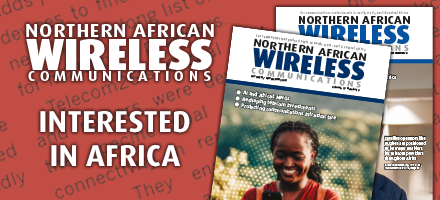10 April 2024

While 5G remains in its infancy in vast swathes of the world, the relentless pursuit of progress sees certain nations marching onwards, with 6G becoming closer than ever…
Increasing levels of global interconnection and expanding reliance upon digital technologies is seeing hefty demand for ubiquitous, reliable, high-speed connectivity.
6G, the next generation of mobile technology, is expected to address this demand by offering unprecedented speeds, minimal latency, and seamless connectivity, revolutionising various industries, and enhancing the overall digital experience.
“It is difficult at this phase to say with certainty how 6G will be implemented and how it will benefit customers, but research and industry trends point to a few likely outcomes,” says Sarah LaSelva, director of 6G, Keysight Technologies. “For example, 6G will be the first generation that will be designed around post quantum security. While we can retrofit older generations, 6G will benefit from new security features added throughout all parts of a wireless system.”
Emerging technologies
According to BIS Research, the Asia-Pacific’s 6G market is expected to expand at a compound annual growth rate (CAGR) of 106.42% over the forecast period to reach US$275.91 billion by 2035. The driving force is primarily the escalating demand for high-speed and dependable connectivity, coupled with the adoption of cutting-edge technologies. This is a response to the increasing need to meet the growing demands of data-intensive applications and the emergence of technologies such as augmented reality (AR), virtual reality (VR), and IoT.
6G is coming on in leaps and bounds but remains in its infancy – as does its predecessor 5G. As such, its relevance for southern Asia will depend on factors such as the region’s existing telecommunications infrastructure, economic priorities, technological capabilities, and international collaborations. And although 6G is not an immediate priority for many southern Asian countries, it’s essential for policymakers and stakeholders to keep an eye on emerging technologies.
“At this stage, southern Asia has the opportunity to participate in fundamental research and actively shape 6G,” says Sarah LaSelva, director of 6G, Keysight Technologies. “While Indian companies have been a part of shaping standards like 3GPP for years, their influence as the world’s most populous nation and the first nation to deploy 5G standalone (SA) will likely be more forcefully felt in 6G.”
All change
The establishment of 6G infrastructure requires significant investment in equipment, spectrum allocation, and network deployment; and may come up against significant regulatory challenges. Extensive planning, coordination, and collaboration among various stakeholders will be needed.
Building 6G infrastructure will be a considerable effort, spanning the deployment of new base stations, retrofitting existing ones, and installing advanced antenna systems to support higher frequencies and accommodate massive device connectivity.
There’s also the tricky matter of standards. Back in December 2023, the ITU shared the framework for 6G standards, representing ‘significant progress’ in its development. The union expects 6G to require multiple frequency ranges to meet capacity and coverage needs, ranging from sub-1GHz up to bands above 100GHz. It is also working on a report on the technical feasibility of IMT mobile technologies in bands above 92GHz to meet new use cases with high data rates and low latency. As far as 6G capabilities go, the ITU is discussing peak data rates of 50-200Gbps, 0.1-1ms latencies, and spectrum efficiencies 1.5-3 times greater than 5G. 2030 remains the target date for 6G standard approval.
“By agreeing on a way forward on 6G, ITU Member States have taken an important step forward ensuring that technical progress is synonymous with affordability, security, and resilience – supporting sustainable development and digital transformation,” reports Doreen Bogdan-Martin, secretary-general, ITU.
Spectrum availability continues to be one of the key challenges. The required higher frequency bands have limited range and are susceptible to signal attenuation due to atmospheric absorption and obstacles like buildings and foliage – requiring significant thought on the part of equipment manufacturers. Moreover, spectrum auctions, regulatory frameworks, and international coordination will be necessary to allocate and manage spectrum resources effectively.
“There are issues globally related to spectrum,” agrees LaSelva. “There are no obvious frequency bands available for global harmonisation for 6G. There is a desire to deploy 6G between 7-24GHz, but incumbents including many satellite applications and governments exist so innovative ways to share spectrum are needed.”
However, as far as southern Asian deployments go, “India has an advantage over the rest of the world in deploying 6G networks when they become available. India decided not to deploy 5G NSA and went straight to SA. All indications point to the 6G core being an evolution of the 5G SA core, and having a fully deployed 5G SA core with no outdated 5G NSA core will make deploying 6G a smoother and easier process,” adds LaSelva.
Should 6G be the priority?
India is leading the path for southern Asia’s pursuit of super-fast 6G technologies. However, with large proportions of the population still lagging on 3G and even 2G, is this priority right?
Maybe so: being an early adopter and leader could provide operators with a significant competitive advantage in the telecommunications market, helping attract new subscribers, retain existing customers, and differentiate their services from competitors. Introducing new 6G services could also open additional revenue streams, enabling access to premium content delivery, immersive gaming experiences, VR applications, and real-time remote services.
Additionally, operators that lead the development of 6G technology may have a greater influence on regulatory and policy decisions. By actively participating in standardisation efforts, spectrum allocation discussions, and policy debates, they can shape the regulatory environment to their advantage.
“At this stage, southern Asia has the opportunity to participate in fundamental research and actively shape 6G,” says LaSelva. “While Indian companies have been a part of shaping standards like 3GPP for years, their influence as the world’s most populous nation and the first nation to deploy 5G SA will likely be more forcefully felt in 6G.”
Prioritising 6G over 4G/5G also allows operators to future-proof their investments and infrastructure. Cell towers built for 4G/5G/6G capabilities will remain relevant for the long-term, thereby avoiding hefty infrastructure upgrades further down the line. One key aspect of future-proofing tower builds is the migration from copper to fibre, supporting higher transmit rates and lower latency – essential for both 5G and 6G. Many infrastructure owners are already committed to the change, enjoying the added benefit of avoiding service-disrupting copper cable thefts which are rife in many regions.
The world is watching
The future for 6G in APAC is mixed. Investments are growing, standards are developing, and operators are coming on board. However, continued advancements will likely be influenced by a combination of technological advancements, policy decisions, market dynamics, and international collaborations; challenges and uncertainties remain.
Questions of priorities also remain. While 6G is set to be a huge enabling technology in connecting the unconnected and delivering truly meaningful connectivity to remote and rural regions, so too is 5G. Accordingly, while some of southern Asia’s nations are grasping onto 6G with both hands, others are focusing on the wider rollout of 4G and 5G.
No doubt, research and development will continue among richer nations, with academic and research institutions collaborating to advance the next generation of mobile technologies. However, adoption will be unevenly distributed across the region, at least for the next few years.
LaSelva believes that, with the combination of the world’s largest population and the world’s only fully 5G SA deployment, India’s actions will give it insights into what improvements and evolutions 6G will need in a way that other countries cannot offer.
“The world is watching with excitement as the wireless segment continues to grow in this region,” concludes LaSelva.






